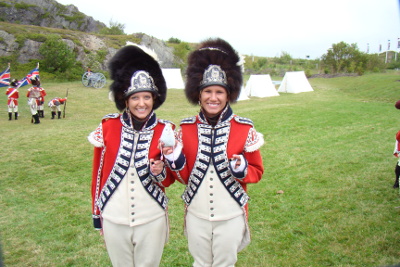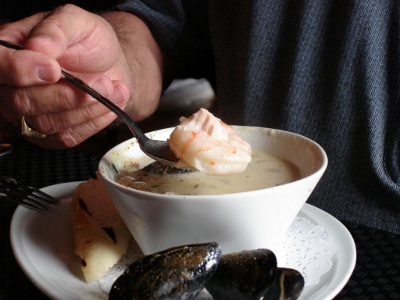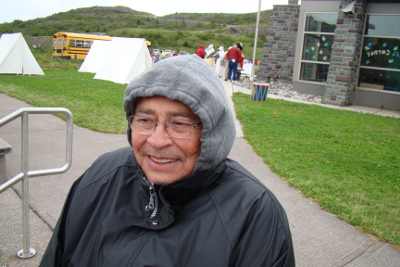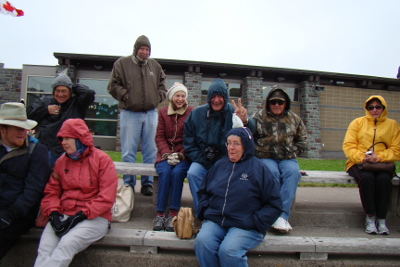Finally! we’d made it to Newfoundland! Our first stop was to be the Capital, St John’s.   We fell in love with this quaint little town (pop. 192, 326 in 2010). John Cabot sailed here in 1497, followed by the French, Spanish and Portuguese. In 1583 it was claimed as an English colony by Elizabeth I. It was attacked by the Dutch, then captured and destroyed by the French 3 times, before being retaken and fortified. It remained fortified through the 18th and 19th century. St John’s is the oldest English settlement in North America to hold city status. Year-round settlements began before 1620.
A few things struck me about St John’s. It has an old-fashioned character, with very few modern buildings. Most of the residential buildings are sided with “clapboard”, brick houses are rare and far between.
The two main churches (Anglican and Catholic) are strikingly beautiful.
The food is great, the people are even greater! You get a sense of joy from the residents of St John’s. They love their city and it shows.   While we were hiding from the rain under a canopy at the entrance of a museum, one of the worker came out, having finished her working shift, it was rainy and cold and she had no umbrella or coat, she looked at us smiling, and said… “Oh! Newfoundland, you don’t live here for the money or the weather, but the people are FABULOUS!” That sums it up!
My only regret is that we missed the organ concert and the afternoon tea served in the crypt at the Anglican church. By the time we learned about it, it was over. On the other hand, we had a great time at the Yellowbelly brewery. The beer was great, the seafood chowder even better.
Then we went to Signal Hill, where we had a great view of the Port of St. John’s and the capital city.
The final battle of the Seven Years war was fought there in 1762. This is the battle when the French finally surrendered to the British under the command of Lt. Colonel William Amherst.
We had fun watching the St John’s Tattoo, where soldiers, wearing the military uniforms circa 1795, gave a military concert by the fifes and drums and demonstrated the musket, drills and battle formations of the time. They even fired some cannons!

Don't you know it! Chicken had to get in the middle of the Tattoo and make friends with two soldiers, who strangely look like.. girls?
We go North in the summer to escape the heat of Florida. Escape the heat we did….
We warmed up at the Duke of Duckworth with a hot and delicious “Fish’n Chips” and a good beer!
And finally, we had tea at “The Rooms”, a fantastic museum where we saw collections of artifacts, pictures, sculptures and artwork from Newfoundland and Labrador. From the museum’s café, we had a different view of St John’s, in this picture you can see the Anglican Cathedral on the right.
A few facts:
1901: Signal Hill was the site of the reception of the first transatlantic radio signal. The Morse code signal originated in Cornwall UK.
1919: St. John’s was the starting point for the first non-stop transatlantic aircraft flight, piloted by Alcock and Brown in a modified Vickers Vimy IV bomber. They flew to Connemara Ireland.
Second world war: The harbour supported the Royal Navy and Royal Canadian Navy ships engaged in anti-submarine warfare. It was also the site of Fort Pepperell, an American Army Air Force base.











August 2nd, 2011 at 3:31 PM
I think I will not put Newfoundland on my bucket list as I like July to be warmer than 45 degrees! But it looks inviting and, as you say, nice people make all the difference.